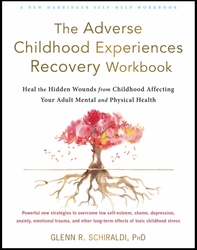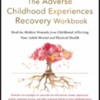Pioneering researcher and physician Vincent Felitti was the first to show that adverse childhood experiences (ACEs) predict a very wide range of troubling psychological, medical, and functional problems in adulthood. He also concluded that time usually doesn’t heal the hidden wounds from toxic childhood stress.
Fortunately, recent advances in disciplines like neuroscience, psychology, and exercise immunology have led to new understanding of the brain, nervous system, attachment, trauma, and resilience. These advances have led to the development of many new and effective strategies for recovering from the inner wounds from childhood—wounds that continue to trouble us in adulthood.
This blog explores the eight elements of an integrated healing plan. Individuals can learn and apply many important skills, and, when trying to settle trauma memories seems too challenging, secure the help of a skilled trauma specialist. As a general rule, the more of the eight elements that are addressed, the greater is the likelihood of recovery.
Healing Principles
- The brain is plastic. This means, in part, that troubling childhood memories and other disturbing neural pathways can be rewired.
- Blaming others for our suffering is not helpful because blame leaves us feeling like a helpless victim. What is helpful is to acknowledge pain, understand its source, and take responsibility for healing so that we can move on in satisfying ways.
- Healing takes place in a safe, calm, compassionate, and accepting environment.
- The skills that we learn to rewire disturbing neural pathways are also useful to cope with everyday stress and prevent damage from toxic stress in the present.
The Eight-Step Integrated Healing Plan
This plan might be thought of as a blueprint for healing. The first four steps prepare us to rework troubling memories from the past that continue to “run our show” in adulthood. Step 5 relates to reworking and neutralizing those troubling memories. Step 6 relates to neutralizing shame that is deeply embedded in childhood memories. Step 7 relates to transitioning to a more pleasant life. Step 8 relates to accessing skilled mental health professional at any time that help is deemed necessary. The first seven steps are best applied in the sequence described.
- Regulate dysregulated stress. As previous blogs have discussed, when stress arousal is neither too high nor too low, we are hardwired to function at our best—to reason, to speak and relate to others productively, and to process old memories in a cool way with appropriate emotions. When we are stuck on arousal that is too high or too low, thinking, reasoning, and the ability to consciously recall and speak about old memories calmly and rationally goes out the window. So step 1 involves mastering skills that bring stress levels back into the optimal range, where all parts of the brain are working together optimally.
- Regulate strong distressing emotions. Extreme emotions like grief and fear tend to maintain dysregulated stress arousal, so step 2 involves skills that manage strong emotions.
- Optimize brain health and function. Most people do not fully appreciate how the physical condition of the brain affects mood, functioning, and the brain’s ability to rework old memories and form new, healthy neural pathways. So this step is also critical. Nine keys work together to (1) improve the size, functioning, and health of neurons, particularly in areas that regulate emotions, improve thinking, and process memories; (2) prepare to grow healthy new neural pathways; (3) strengthen the blood-brain barrier to keep toxins from reaching neurons in the brain; (4) clear out harmful proteins from the brain; (5) protect neurons against oxidative stress and inflammation; and (6) favorably influence epigenomes and telomeres, which effect gene expression and brain health.
- Strengthen and stabilize the destabilized nervous system through imagery. Soothing imagery simulates the attachment experiences needed by a child to develop a healthy brain. Other imagery strategies promote self-nurturing. At this point, disturbing old memories are not yet directly addressed. Rather, practicing soothing imagery strategies implants positive new neural pathways that begin to offset disturbing brain wiring.
- Rework troubling memories. At this step in the healing process the brain and nervous system are ready to neutralize disturbing old memories. The fragments of a troubling memory from childhood are brought to conscious awareness, allowing the brain to put them together and then change the memory so that it is no longer so disturbing and intrusive.
- Rework shame. This painful feeling that one is defective, bad, worthless, not good enough, different, and so forth is often engrained in the earliest years. This happens before the verbal, thinking left brain is sufficiently developed to consciously recall memories. So shame is imprinted in the non-verbal right brain, and is experienced not as something that can easily be described in words, but as a feeling and a visceral sense. This shame can be piled upon by shaming experiences that occur later in life and that reside in the verbal left brain. In either case, shame is at the core of much suffering and continuously dysregulated stress in adulthood. The antidote is to stop running from shame, bring it into the light of day, and neutralize it with compassion.
- Transition skills complete the process of becoming whole. This matters because there is more to life than healing old wounds—of simply going from negative to neutral. Many of the previously learned skills can be applied to creating a new and satisfying life. Transition skills relate to cultivating or restoring self-respect, experiencing forgiveness, nourishing the soul, increasing joy, and creating a thriving new future.
- Know when to seek help A skilled trauma therapist can be sought at any point in the healing process. World-class athletes hire coaches to improve their game. Specialized equipment requires maintenance and servicing. All of us need help at times; there is wisdom in knowing when help is needed. Trauma by definition is overwhelming. A skilled mental health professional can greatly facilitate the healing journey. However, all psychotherapists are not equal. An informed “consumer” will interview prospective therapists and select one who is skilled and comfortable to work with.
Hope for the Future
Tremendous strides have been made in neutralizing the suffering linked to ACEs. Future blogs will explore in more depth the strategies and treatments that give us so much hope for the future.
Reference
Schiraldi, G. R. (2021). The Adverse Childhood Experiences Recovery Workbook. Oakland, CA: New Harbinger.
Note:
This article first appeared on Psychology Today blog, October, 26, 2021
About the Author
Glenn R. Schiraldi, PhD, has served on the stress management faculties at The Pentagon, the International Critical Incident Stress Foundation, and the University of Maryland, where he received the Outstanding Teacher Award in addition to other teaching/service awards. His fourteen books on stress-related topics have been translated into seventeen languages, and include The Adverse Childhood Experiences Recovery Workbook, The Self-Esteem Workbook. The Resilience Workbook, and The Post-Traumatic Stress Disorder Sourcebook. The founder of Resilience Training International (www.ResilienceFirst.com), he has trained laypersons, emergency responders, and clinicians around the world on the diverse aspects of stress, trauma, and resilience.







Comments (3)